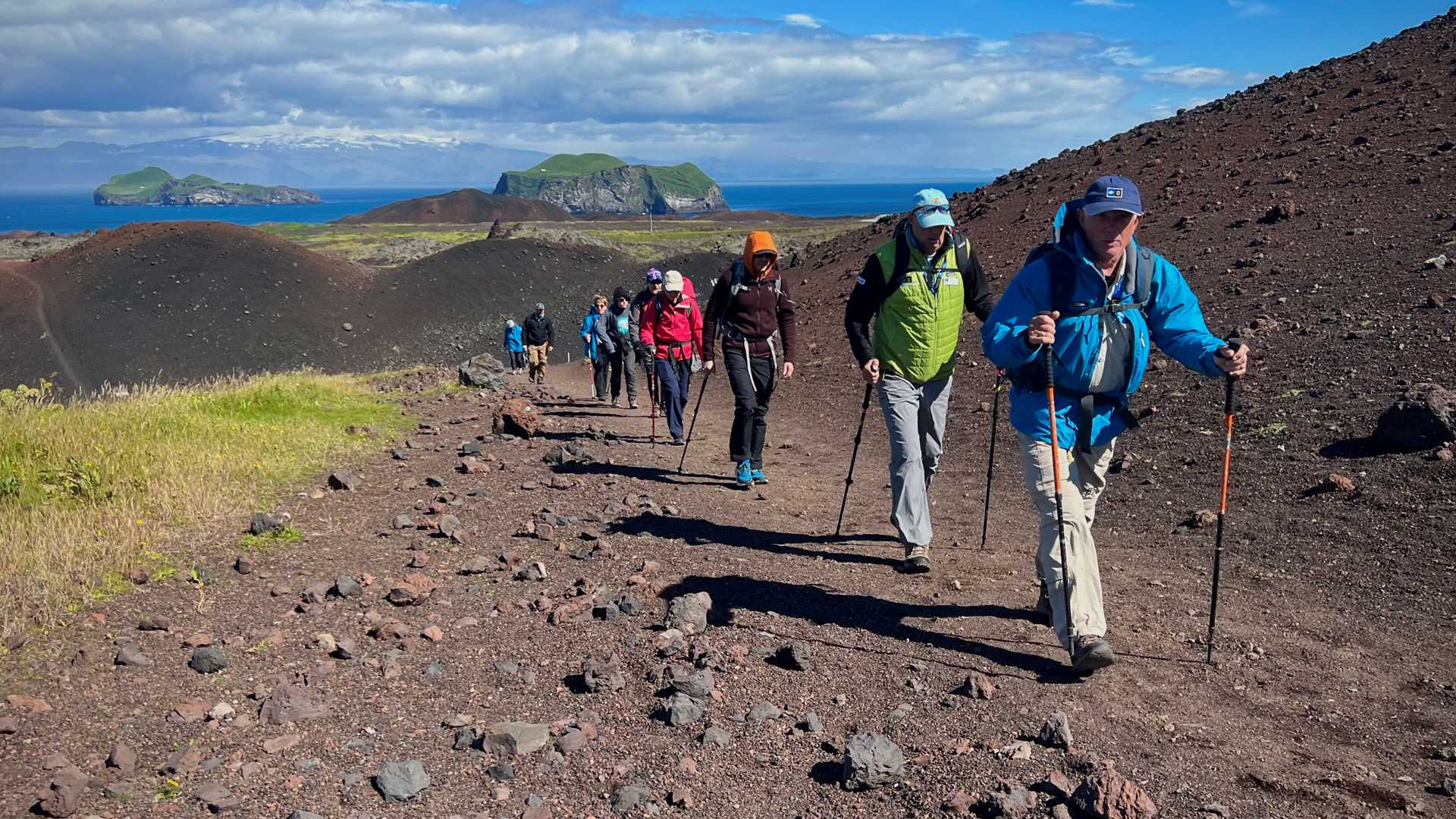You may not know it, but you’ve probably seen the dramatic Vestmannaeyjar Islands off the south coast of Iceland before. It’s like sailing into an Instagram picture. The uniquely sculpted land is both picturesque and memorable. Heimaey is the most amazing. The harbor here was nearly sealed off by an enormous eruption in the late 1970s that demolished many of the houses in the town at the water’s edge. Today, we climbed the remaining lava pile, still warm from the magma lurking beneath the island’s surface. The blue sky gave us broad views, and the strong winds gave us a true taste of the local life. After dinner, we got a closer look at Surtsey—a volcanic island that is younger than many of us on board. It’s a bittersweet but fitting end to our explorations of the land of fire and ice.
8/23/2024
Read
National Geographic Explorer
Reykjavík, Iceland
After a cracking morning out at sea with some truly impressive waves, we were called up to the lounge by Expedition Leader Leah Eaton, who briefed us on a volcanic eruption that had just started on the Reykjanes peninsula. As the briefing concluded, we could already see the volcanic plume through which we would later sail on our way around the Reykjanes peninsula. We finally reached Reykjavík in the afternoon, where we had our final lounge briefing with our guest slideshow, a presentation on our final volcano plan, and a farewell speech from Captain Peik Aalto. After an early dinner, we mounted a trio of busses that carried us out onto the Reykjanes peninsula to an abandoned airstrip. From there we could already see the spectacular eruption very clearly, but to get a better look, we made our way onto some of the old storage bunkers which lined the airstrip. This gave us a view of the eruption in all its glory, with smoke billowing into the sky from the two-kilometer-long fissure, and also a number of smaller fires. It was a truly wonderous ending to an already incredible expedition.







